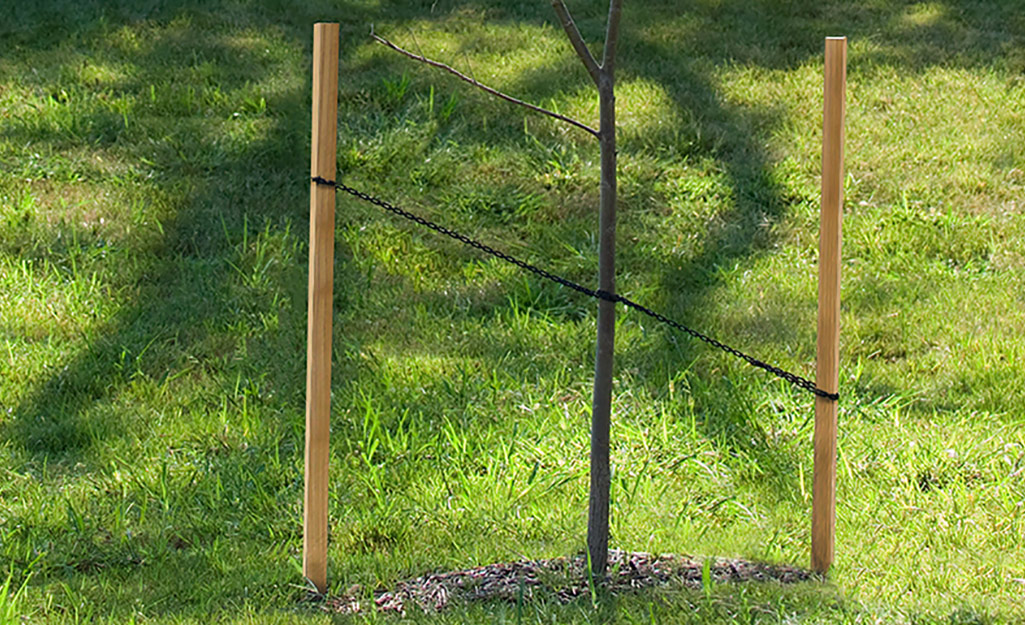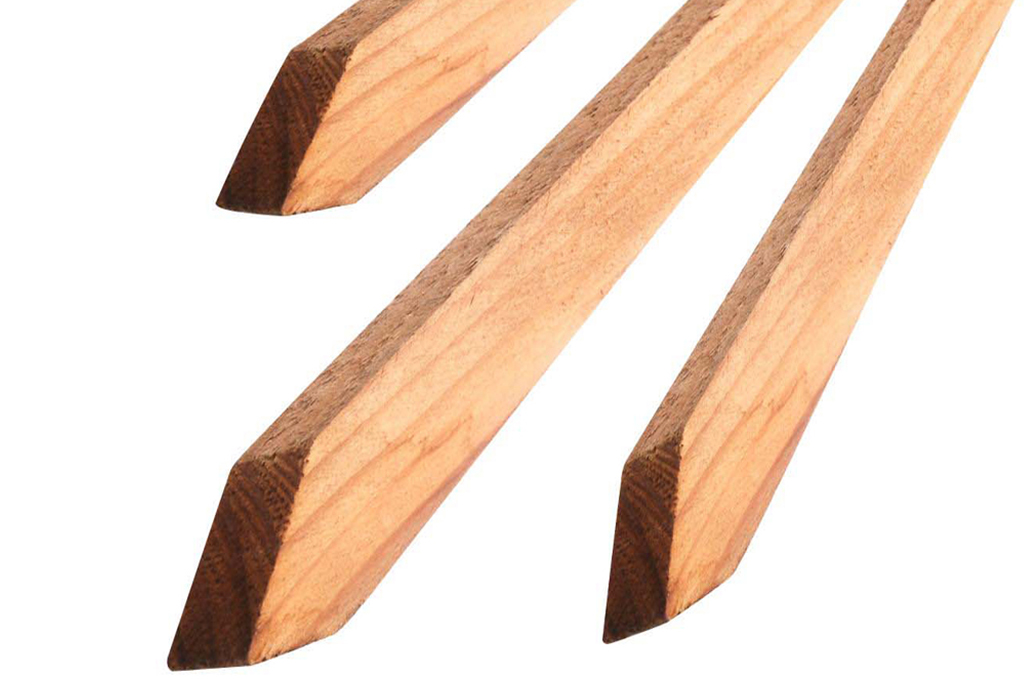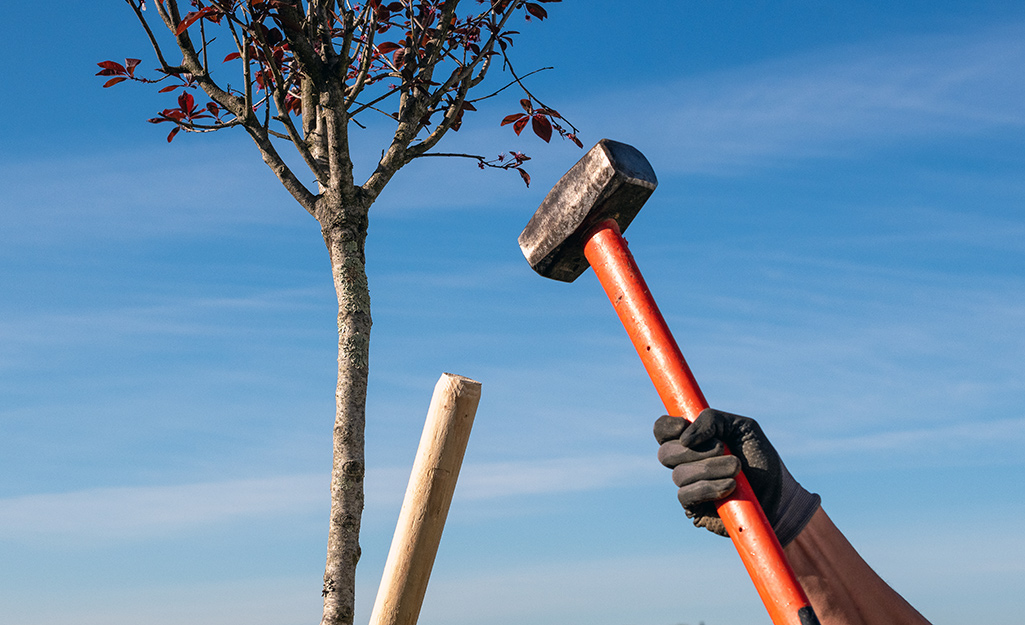Project Guide
How to Stake a Tree
If your new tree is top-heavy or frail enough to get knocked over, you should stake it until it’s strong enough to support its own weight. This guide will teach you how to stake a tree and how to stake a leaning tree.
1. Why Stake a Tree

Not every new tree needs staking. A properly planted healthy tree with a sturdy trunk and root system doesn’t need tree supports. Typically, you don’t have to stake evergreens, conifers or trees that have branches growing lower to the ground. However, there are several situations when staking a tree is beneficial.
In general, you should stake:
- Bare-root trees or trees with a small root ball.
- Trees planted in areas with lots of foot traffic.
- New trees that can’t stand on their own or trees that lean.
- Top-heavy trees with no lower branches.
You should also plan on staking trees in windy areas. Research indicates that unstaked trees under normal conditions have trunks that are stronger than their staked counterparts. There are various methods of staking, but it is important not to put anything against the young tree’s tender bark that would rub or otherwise damage it as this may invite disease.
You will find new trees in a garden center with stakes in the nursery pot already supporting the tree. These stakes should be carefully removed and the tree inspected before you plant the tree. Stakes should be removed at the end of the first growing season to give the tree a chance to stand on its own.
2. Where to Tie the Stakes to the Tree

The first step in how to stake a tree is to determine where to tie the plant supports. Once the tree is planted, follow these steps to determine where you will tie the supports.
- Hold the tree in one hand and rock it gently back and forth.
- Move your hand up and down until you find the height at which the tree stays upright when moved. This is where you should put the tree straps for staking. It’ll be about 1/2 to 2/3 of the way up the trunk.
3. Determine Number of Stakes Needed

The number of stakes is determined by the size of the tree.
- A tree with a trunk 3 inches or less in diameter needs just one stake, which is placed on the windward side; you can use more if desired.
- Larger trees should be staked with two or three stakes in opposing directions.
4. Tie the Tree

- Use 3-inch webbing, polyethylene strips or twine.
- Tie the webbing loosely at the proper spot from step 1.
Tip: Only use soft materials that give and move with the tree. Soft materials allow some sway and encourage the tree to grow stronger roots. Do not use hoses, wires or any other hard, tight material that constricts growth.
5. Drive Stakes into the Ground

- Drive the stakes into the ground so they will hold even in the event of high winds — about 18 inches deep.
- In high-traffic areas, position the tops of the stakes high enough so that no one will trip over the webbing and fall onto a stake — at least 3 feet or higher above ground.
Now that you know how to stake a tree, it’s time to give newly planted trees all the support they need. Shop The Home Depot for plants and flowers, trees, shrubs and all the supplies you need for staking a tree. Use The Home Depot app to order what you need for delivery or curbside pickup.
